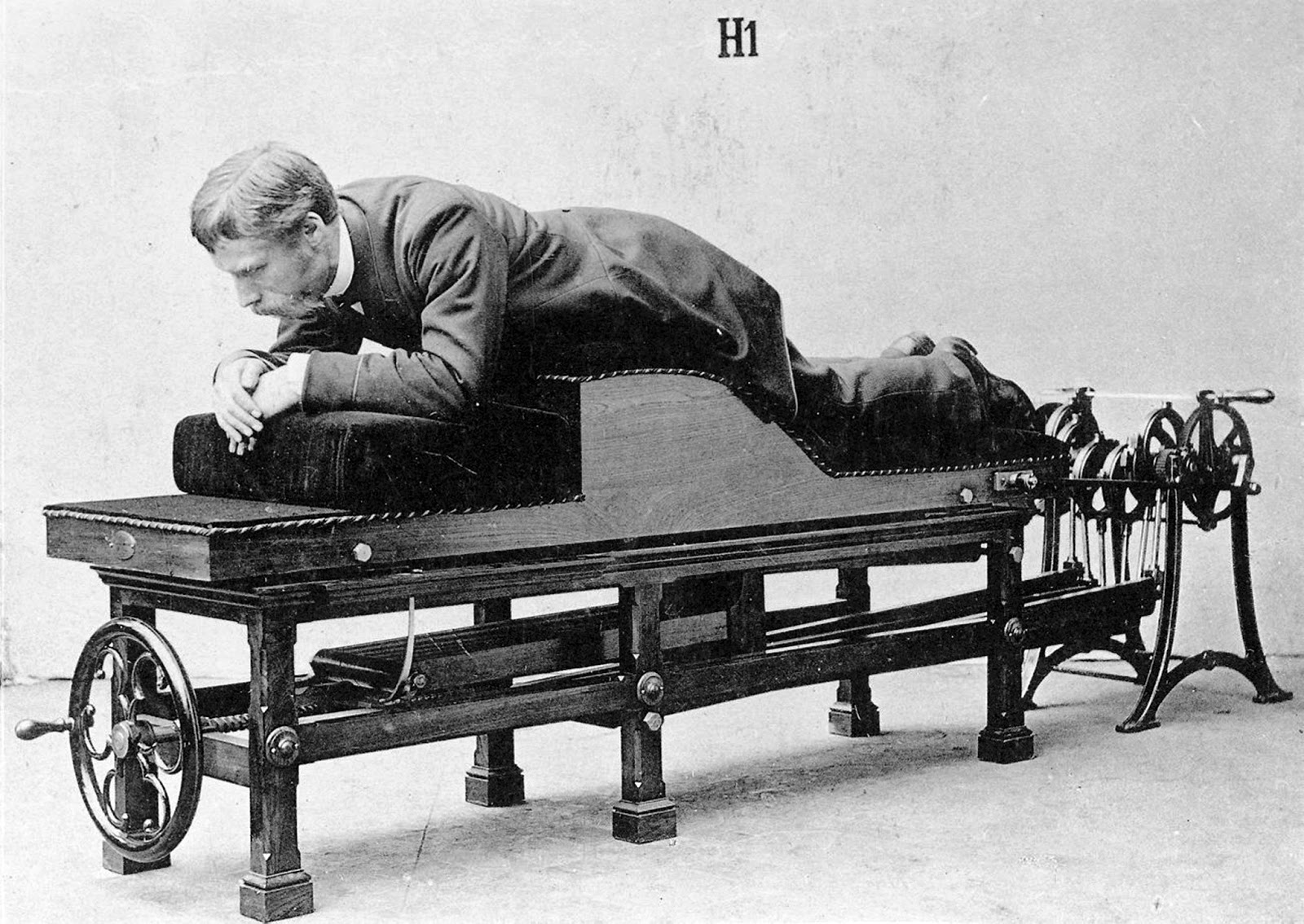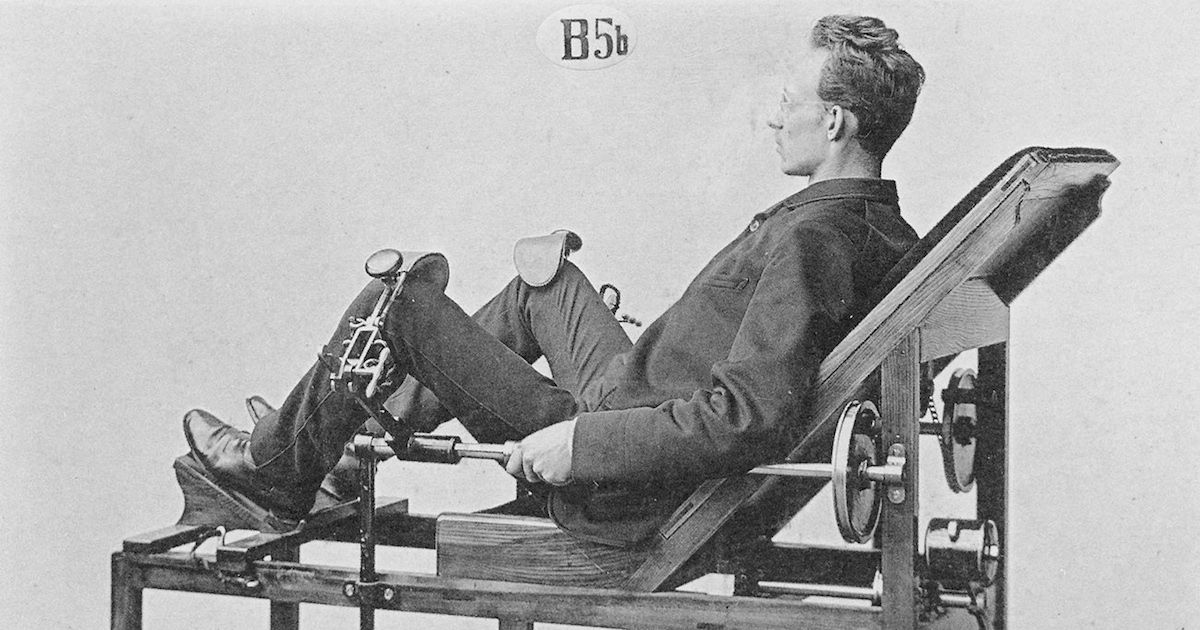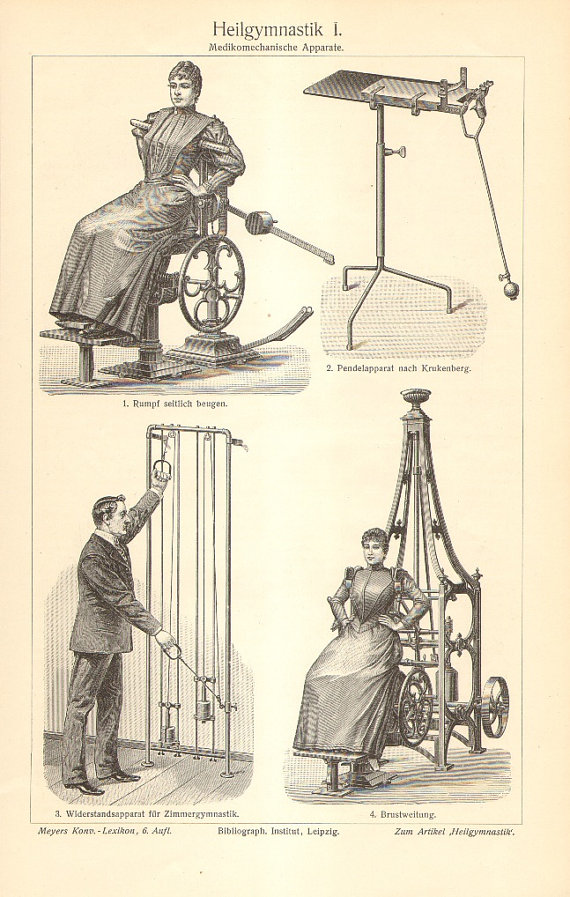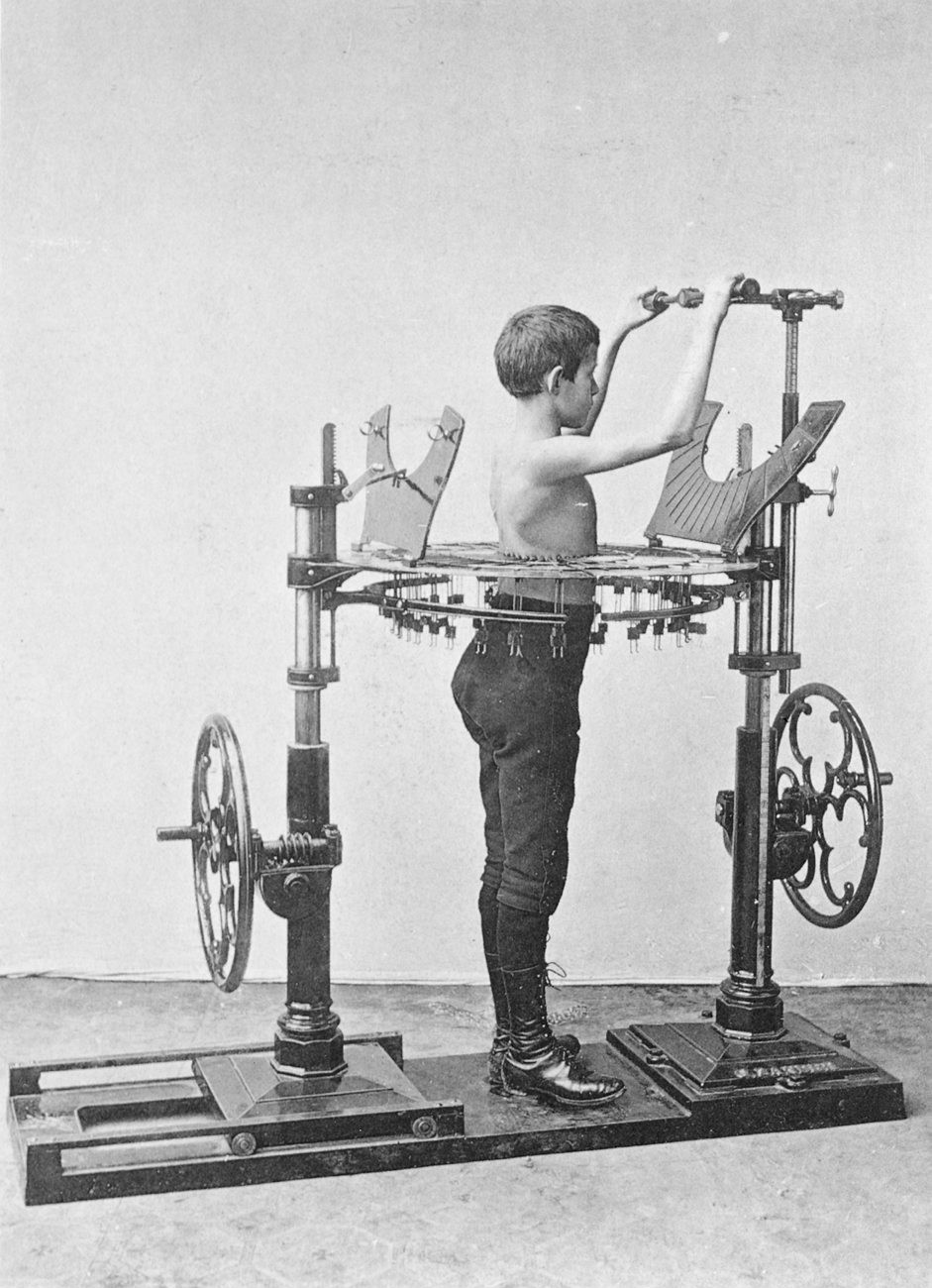
The pandemic has resulted in a lot of people reinventing their fitness regimens, investing in pricey items like Mirror and Peloton bikes to turn homes into home gyms.
Personally, we’re saving our pennies until some Etsy seller replicates the mechanical therapy systems of Dr. Gustav Zander (1835–1920).


From the mid-19th century through WWI, these machines were at the forefront of gym culture. Their function is extremely similar to modern strength training equipment, but their design exudes a dashing steampunk flair.
If the thing that’s going to help us work off all this sourdough weight is going to wind up colonizing half our apartment, we want something that will go with our maximalist thrift store aesthetic.
We might even start working out in floor length skirts and three piece suits in homage to Zander’s original devotees.

His 27 machines addressed abs, arms, adductors—all the greatest hits—using weights and levers to strengthen muscles through progressive exertion and resistance. Specially trained assistants were on hand to adjust the weights, a luxury that our modern world has seen fit to phase out.
Just as 21st-century fitness centers position themselves as lifesavers of those who spend the bulk of the day hunched in front of a computer, Zander’s inventions targeted sedentary office workers.

The industrial society that created this new breed of laborer also ensured that the Swedish doctor’s contraptions would garner accolades and attention. They were already a hit in their land of origin when they took a gold medal at Philadelphia’s 1876 Centennial Exhibition.
The flagship Therapeutic Zander Institute in Stockholm expanded, with branches in London and New York City.
The New York Times described the latter as giving the “uninitiated observer an impression of a carefully devised torture chamber more than of a doctor’s office or a gymnasium, both of which functions the institute, to a certain degree, fills.”
Surely no more tortuous than the blood letting, blistering, and purging that were also thought healthful at the time…

See more of Dr. Gustav Zander’s exercise machines here.
Related Content:
Ayun Halliday is an author, illustrator, theater maker and Chief Primatologist of the East Village Inky zine. This month, she appearsas a French Canadian bear who travels to New York City in search of food and meaning in Greg Kotis’ short film, L’Ourse. Follow her @AyunHalliday.


Kinda stupid to call it “steampunk” when this is ‑actual- Victorian-era material culture, i.e. what steampunk is ‑aping-.
hi we do work